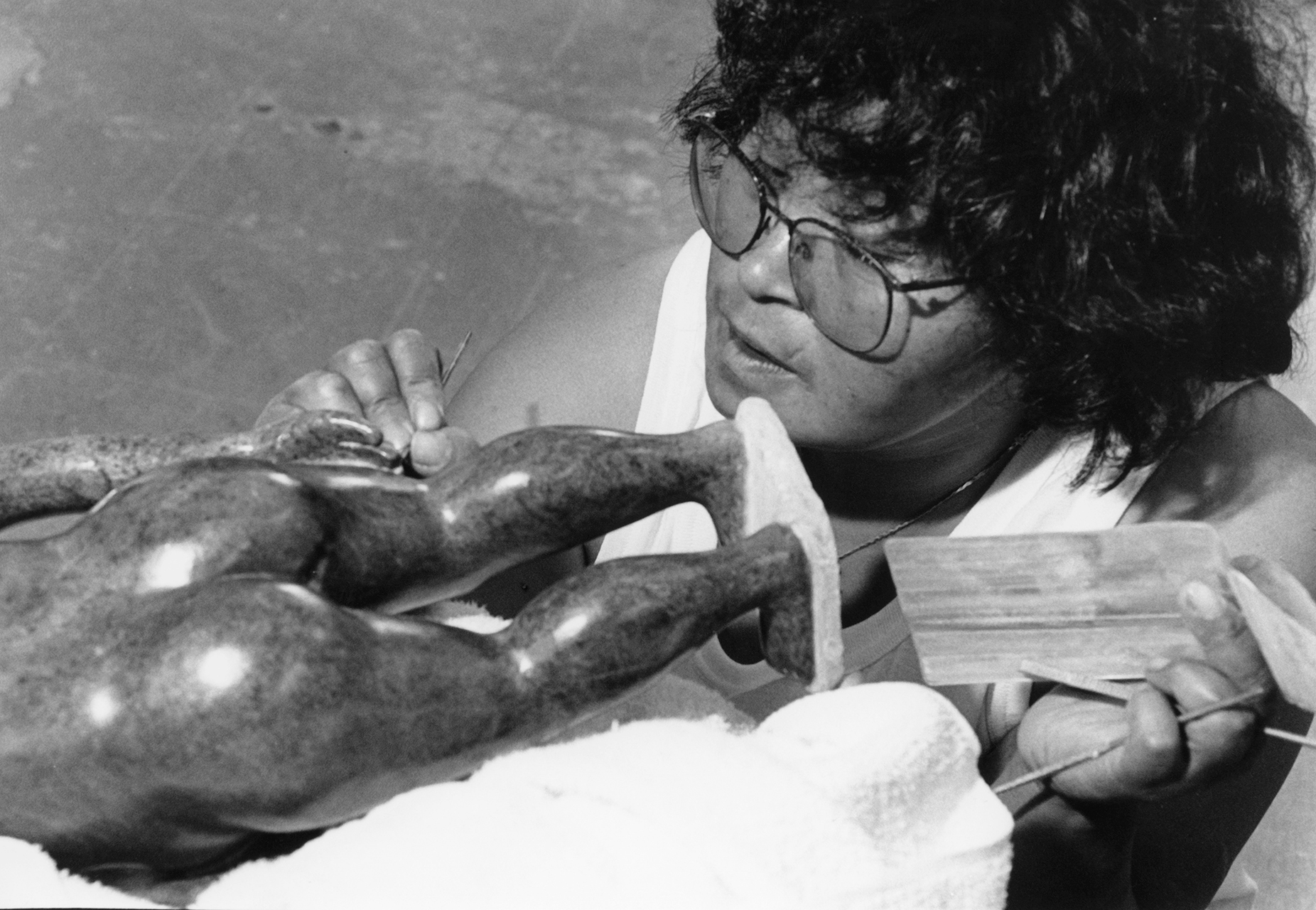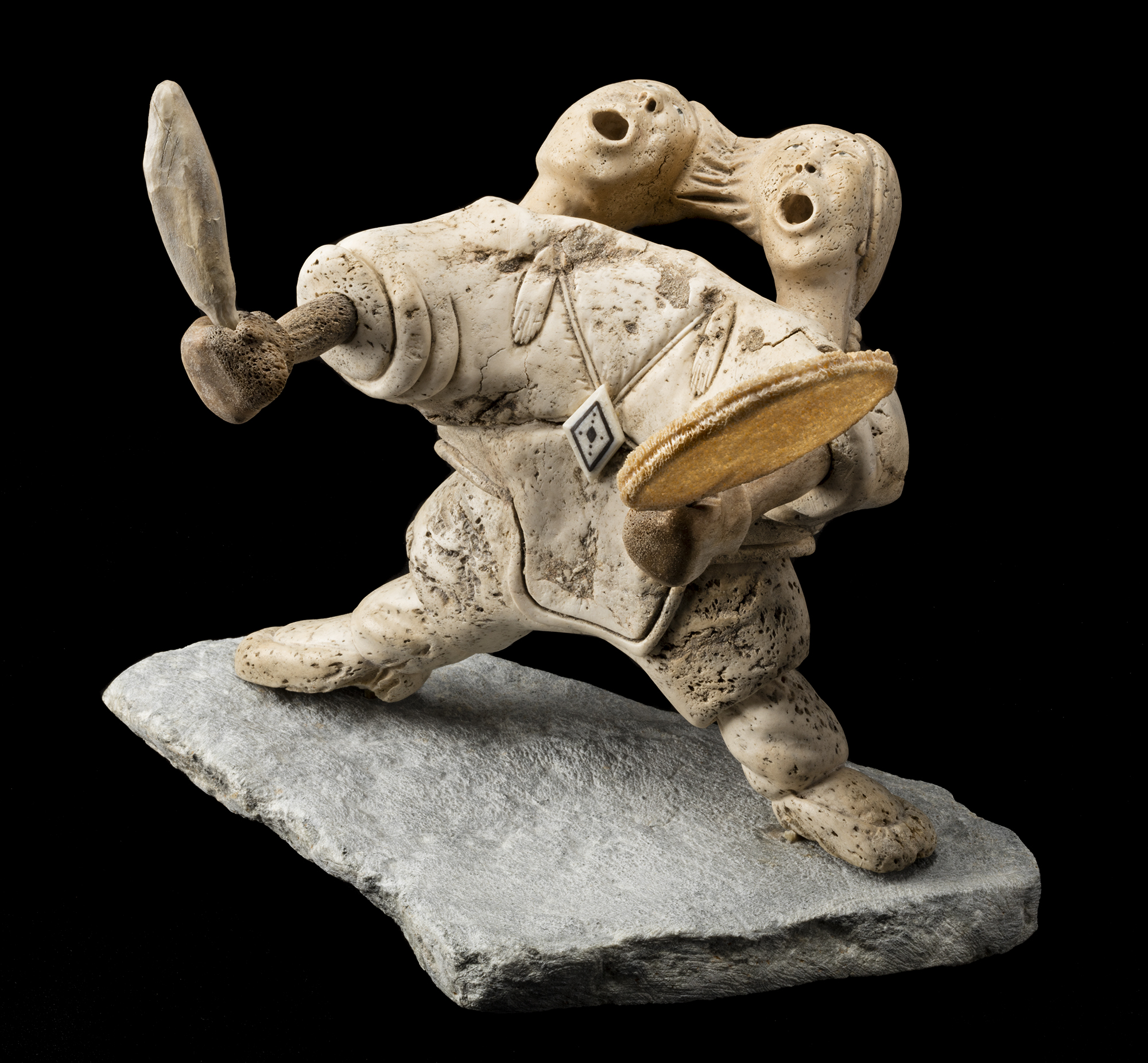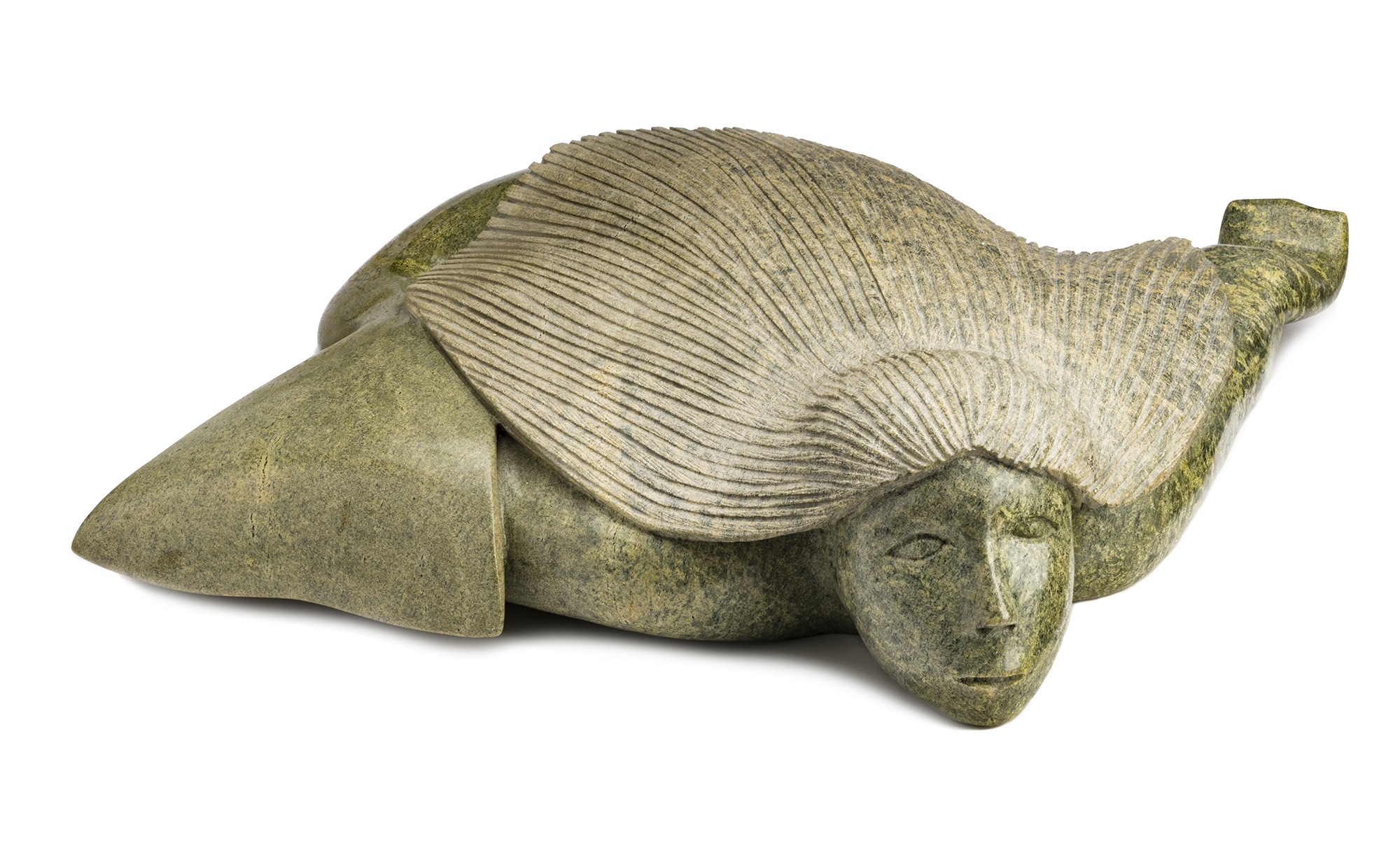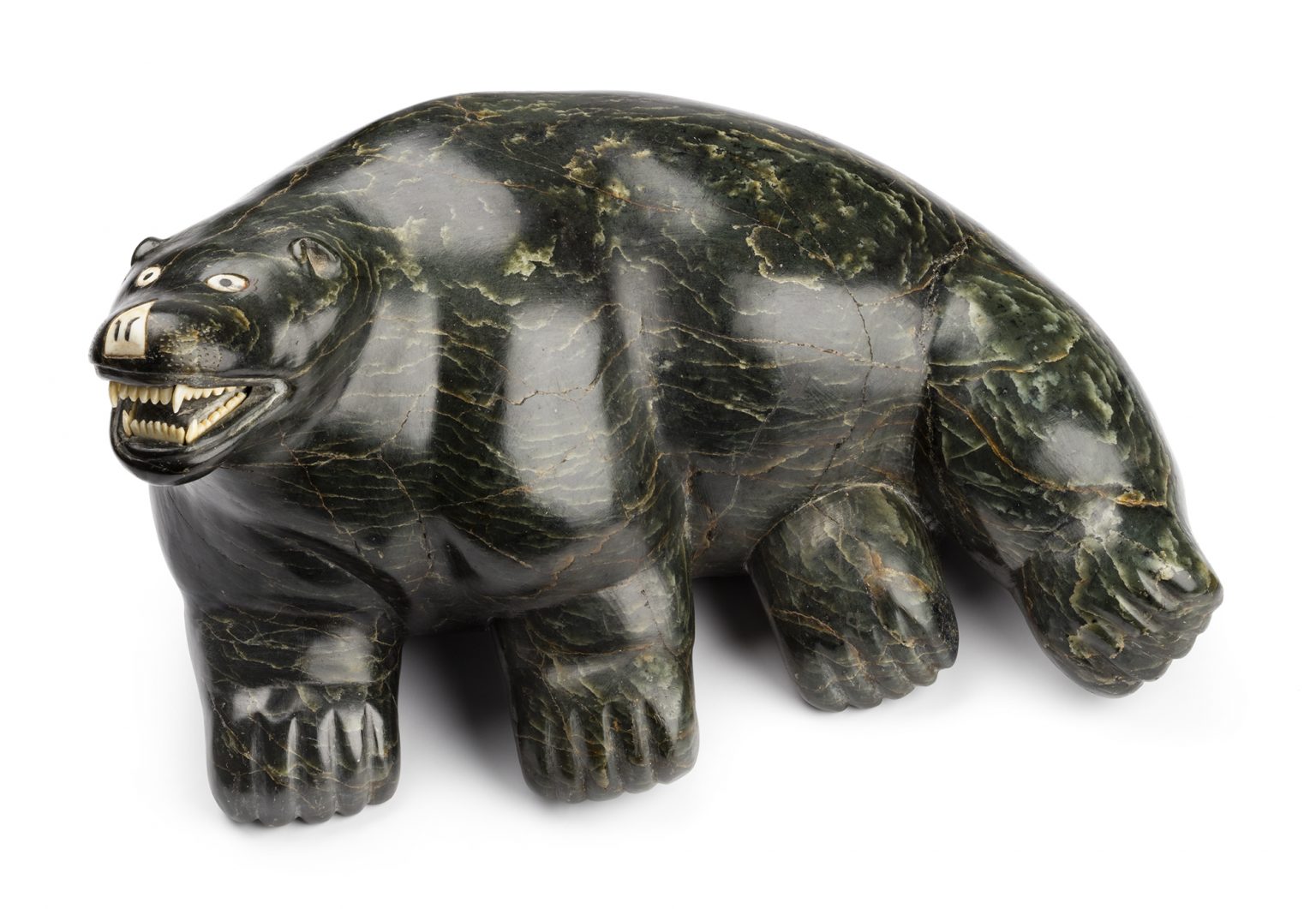4 Inuit carvings fetch world record prices
Oviloo Tunnillie’s piece "Swimming Sedna" sold for $31,200.

Inuit art was in the spotlight last week with four pieces raking in between CA$20,000 and $40,000 apiece at a Toronto-based auction, all just about doubling their predicted sales prices.
The pieces were put up by auction house First Arts on July 15.
A piece by Elijassiapik, from Inukjuak, was the big seller, going for $38,400. “Reclining Polar Bear” is a 1950s carving done with stone, ivory and ink. The price was a record sale for the artist, according to a First Arts news release.
Nadine Di Monte, one of the partners at First Arts, said this sale included some extraordinary work.
“That really invited speculation of record-breaking results,” she said.
A crowd favourite, according to Di Monte, was a piece by Oviloo Tunnillie called “Swimming Sedna,” which sold for $31,200.
“[It] was a real crowd-pleaser in the office, at the previews and, as [the artist] tripled her previous auction record, obviously during the auction as well,” she said.
Tunnillie, who is from Kinngait, died in 2014. A 2019 book about her, titled “Oviloo Tunnillie: Life & Work” by Darlene Coward Wight, describes how she defied gender stereotypes and took up space in the carving industry at a time when it was a more male-dominated field.
Before the auction, potential buyers had the chance to preview the pieces in person, in a 360-degree video tour and in virtual consultations.
Sheokjuk Oqutaq’s piece, titled “Young Hunter with Captured Geese,” also sold for a record price for the artist, at $31,200.
Oqutaq was born in 1920 and died in 1982. He was from Kinngait.
Back in 2006, one of his pieces, Joyful Bird, sold at an auction for $18,000, more than triple the estimated price.
Arctic Bay’s Manasie Akpaliapik, who has pieces displayed in the National Gallery of Canada and others across the country, brought in $26,400 with his piece titled Drum Dancer — also an auction record for the artist.
“One of the more interesting things to note is the successes of the unidentified [Inuit] artists in the sale,” said Di Monte.
A piece called “Standing Mother and Child” sold for $33,600, and another, “Standing Woman with Pail and Ulu,” sold for $19,200. Both are from the 1950s.
Di Monte called the prices “outstanding” and said they are a testament to the long-lasting appeal of the early period of commercial artistic production in the Arctic.
The four record-setting Inuit pieces are among a total of 10 Indigenous pieces that sold for record prices in the auction.
The overall top-selling record-breaker was a mask by Haida artist Robert Davidson titled S’gan Mask, which sold for $90,000.
Di Monte said she doesn’t know where the pieces will end up in the world, but “many” of the works are going to collectors who are known for lending art to institutions, such as art galleries, to display.
She said the auction’s success will allow First Arts to support different philanthropic and cultural initiatives and support Indigenous communities with regular donations.
A new round of donations will be announced later this summer, Di Monte said.



